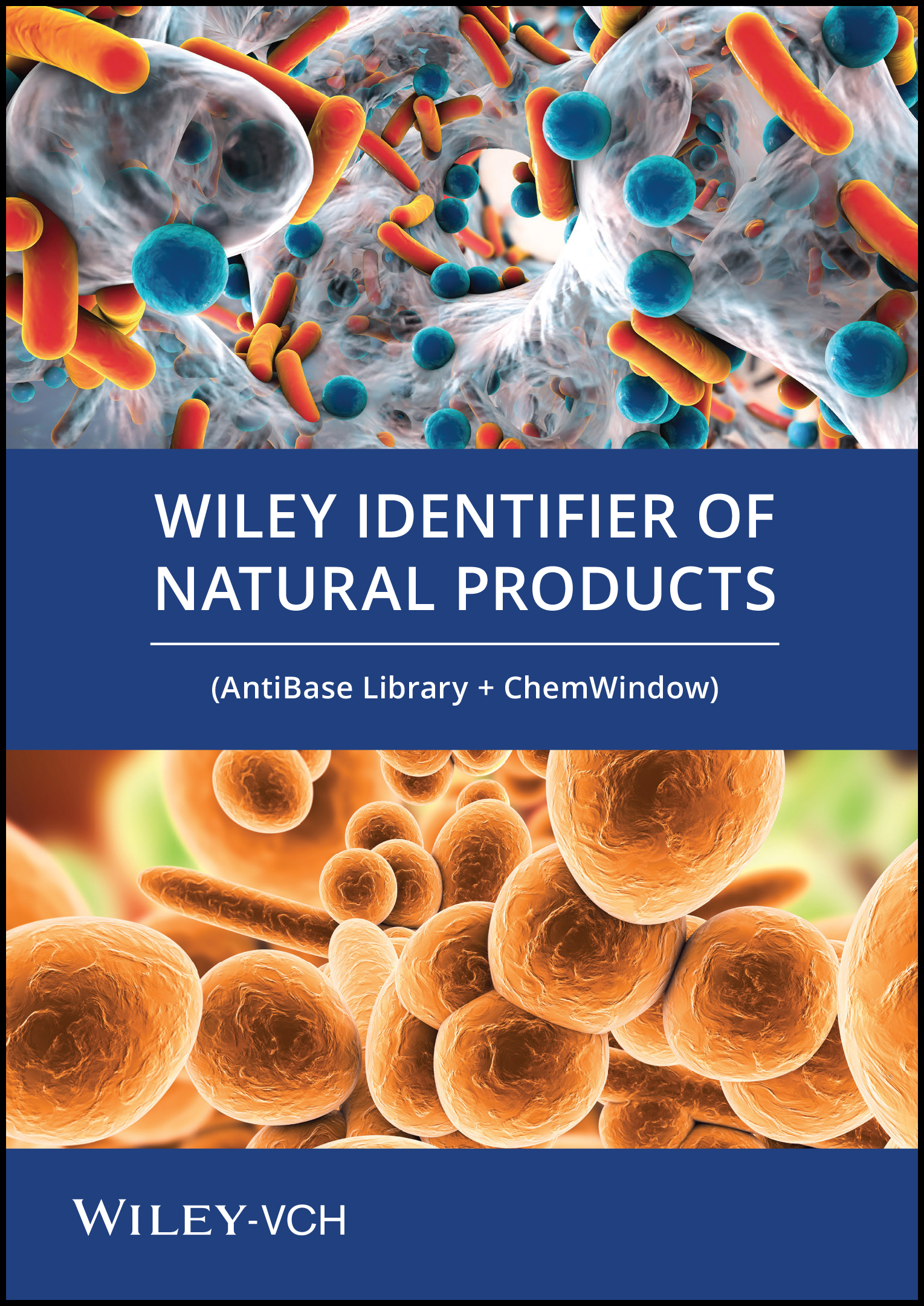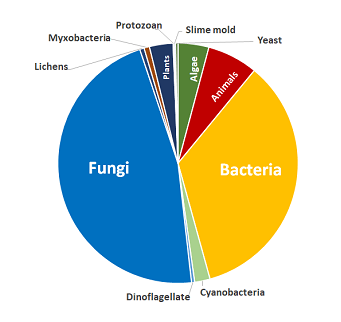Überblick
Eine Datenbank für Naturprodukte für das Screening von Verbindungen und andere Anwendungen in der Naturstoffforschung
Die renommierte AntiBase Library, die ursprünglich von Dr. Hartmut Laatsch entwickelt wurde, ist eine umfassende Bibliothek zu Naturprodukten mit mehr als 105.300 Verbindungen. Der neuesten Version haben wir sogar noch über 9.500 weitere Verbindungen hinzugefügt!
Diese in der wissenschaftlichen Literatur viel zitierte Bibliothek ist ein effektives Screening-Tool für Metabolomik und die Entwicklung von Wirkstoffen in Bereichen, in denen Naturprodukte und ihre Derivate therapiebeschleunigend wirken können, z. B. bei Krebserkrankungen, Diabetes und anderen Erkrankungen sowie in der antimikrobielleen bzw. antifungiellen Forschung.
Verwenden Sie die mitgelieferte ChemWindow-Software von Wiley, um die Sammlung sicher zu durchsuchen, und die leistungsstarken Tools, um Ihre eigenen Datenbanken zu erstellen, Strukturen zu zeichnen und vieles mehr.
Umfassende Abdeckung. |
Sorgfältig ausgewählte Daten. |
Leistungsstarke Tools für das Data Mining. |
|
Schnellere Erkennung mit erweiterter Abdeckung von Verbindungen in verschiedenen Kategorien in dieser umfangreichen Ressource für die Erforschung von Naturprodukten. |
Bei Wiley hat die Datenqualität oberste Priorität, damit Sie zuverlässige Ergebnisse erhalten und fundierte Entscheidungen treffen können. |
Robuste Data-Mining-Tools für tiefere Einblicke und die Fähigkeit, eigene Daten zu erstellen/einzubinden und vieles mehr. |
Anwendungen:
- Binden Sie die Bibliothek in High-Throughput Screening (HTS)- und Dereplikationsabläufe in den Bereichen Pharmazie und Biotechnologie ein, um umgehend bereits untersuchte Verbindungen zu identifizieren und die Suche nach neuen Verbindungen mit antimikrobiellen oder sonstigen erwünschten Wirkungen zu optimieren.
- Verwenden Sie die Bibliothek in verschiedenen Branchen wie in der Lebensmittel- und Kosmetikindustrie, in der Landwirtschaft, zur Entwicklung von Pestiziden und für andere Anwendungen, in denen Naturprodukte vorwiegend zum Einsatz kommen, oder nutzen Sie sie für akademische und Forschungsprogramme.
Was ist neu in der Version 2025?
Wir haben die Sammlung mit über 9.500 neuen Verbindungen um 10 % vergrößert. Darin sind auch Verbindungen aus der neuesten Version des Natural Product Atlas enthalten.
Zuverlässige Daten aus einer vertrauenswürdigen Quelle
Wiley ist eine zuverlässige Quelle für wissenschaftliche Daten. Unsere wohlbekannten Datenbanken werden gemäß strikter Protokolle verarbeitet, um eine möglichst hohe Qualität sicherzustellen. Die Qualifikationsverfahren beginnen bei der Datenerfassung und werden während des gesamten Datenbankentwicklungsprozesses fortgeführt. Von zuverlässigen Partnern stammende Daten werden gründlich überprüft, bevor sie in unsere Sammlungen aufgenommen werden.
Wichtigste Funktionen
|
Sorgfältig ausgewählte und geprüfte Daten |
Die Daten werden aus Primär- und Sekundärliteratur zusammengetragen und anschließend sorgfältig geprüft und validiert, wobei wichtige Referenzen und Quellen als Datenfeld angegeben werden. |
| Wertvolle Metadaten zur Verfeinerung von Ergebnissen |
Abgesehen von chemischen Strukturen enthalten Datensätze auch durchsuchbare Metadaten (sofern verfügbar) wie diese:
|
| Spektrendaten zur besseren Charakterisierung |
|
| Leistungsstarke Tools für das Data Mining und die Datenbankerstellung |
Beinhaltet die ChemWindow-Software von Wiley für das Durchsuchen der Sammlung sowie leistungsstarke Tools, mit denen Sie Ihre eigenen Datenbanken erstellen, Strukturen zeichnen können und vieles mehr. |
Verbindungsabdeckung
Enthält Verbindungen der folgenden biologischen Quellen:
- Algen
- Tiere
- Bakterien
- Cyanobakterien
- Dinoflagellat
- Pilze
- Flechten
- Myxobakterien
- Pflanzen
- Protozoen
- Schleimpilz
- Hefe
Spezifikationen der Bibliothek
|
|
|
Kompatibilität
- Der Wiley-Identifikator für Naturprodukte beinhaltet und ist kompatibel mit der KnowItAll ChemWindow Edition-Software.
- Er kann auch mit anderen Editionen der KnowItAll-Software verwendet werden, die Sie nutzen.
Bestellinformationen
|
Produktcode |
Produkt |
|
978EALDB04188 |
Wiley-Identifikator für Naturprodukte – AntiBase Library + ChemWindow (Wiley Identifier of Natural Products (AntiBase Library + ChemWindow Software)) (Jahresabonnement) |
|
978EALDB05529 |
Wiley-Identifikator für Naturprodukte – AntiBase Library + ChemWindow (Wiley Identifier of Natural Products (AntiBase Library + ChemWindow Software)) (Verlängerung des Jahresabonnements) |
|
978EALDB04195 |
Wiley Identifier of Natural Products (AntiBase Library) (Jahresabonnement)* |
|
978EALDB05512 |
Wiley Identifier of Natural Products (AntiBase Library) (Verlängerung des Jahresabonnements)* |
* Erfordert KnowItAll-Software

